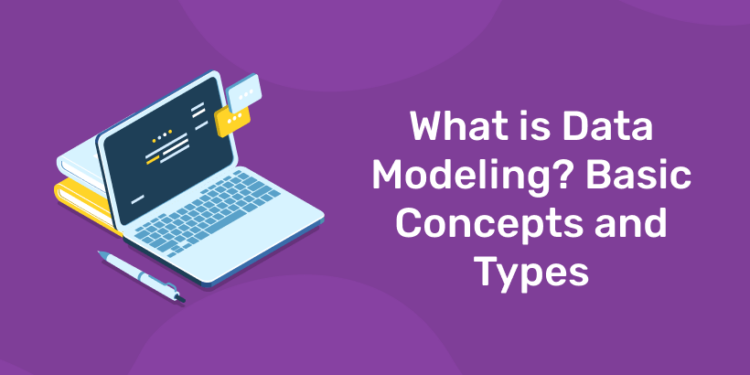Data modeling is the technique of utilizing words and symbols to describe the data and how it flows to create a streamlined picture of a software system and the data pieces it includes. Data models provide a plan for building a new database or reengineering an old application. In general, data modeling assists a company in efficiently using its data to fulfill informational business needs. A data model can be compared to a flowchart that shows the relationships between entities, their attributes, and the data entities themselves. Before any code is created, data management and analytics teams can discover mistakes in development plans and describe the data requirements for apps.
Data Science courses and Placements. Join Entri
A fundamental aspect of data management is data modeling. It assists in identifying the information requirements for various business processes by giving a visual representation of data sets and their business context. The features of the data items that will be utilized by programs as well as by database or file system structures for the processing, storing, and management of the data are then specified. Internal data standards and common data definitions can also be established with the use of data modeling, frequently in conjunction with data governance initiatives. It also has a significant impact on data architecture procedures that list data assets, depicts the flow of data across IT systems, and develop a theoretical foundation for data management.
Types of Data Model
The three basic categories of data models used by organizations are as follows. These are created when an analytics project is being planned. They involve contributions from a specific group of stakeholders and have a variety of functions, ranging from abstract to discrete requirements. Let us look at the types of the data model.
- Conceptual Data Model
The most basic and abstract models of data are conceptual ones. In this model, there is little annotation or data use, but the general structure and guidelines for the data linkages are established. You’ll find things like the fundamental business principles that must be followed, the data categories or entity classes that you intend to include, and any additional restrictions that may restrict layout alternatives. Conceptual data models are typically employed during a project’s discovery phase.
- Logical Data Model
The conceptual model’s fundamental structure is expanded upon in the logical data model, which also takes more relationship aspects into account. There are a few simple annotations that relate to general characteristics or data features, but there aren’t many that concentrate on specific data units. Plans for data warehousing can benefit significantly from this strategy. The structure of the data entities and their interactions are further defined by this model.
- Physical Data Model
Since the physical data model is the most thorough and typically the last step before creating the database, it frequently takes database management system-specific characteristics and regulations into account. You’ll provide enough information about the various data pieces and how they relate to one another to produce a schema or comprehensive actionable design that includes all necessary directions for the database build. The main difference between a physical and logical data model is that a logical model does not participate in the implementation of the database, but a physical model does. In other words, the physical model, which provides an abstraction of the database and aids in the generation of the schema, is built on the logical data model.
Are you aspiring for a booming career in IT? If YES, then dive in |
||
Full Stack Developer Course |
Python Programming Course |
Data Science and Machine Learning Course |
Data Modelling Techniques
Although there are many methods for successfully modeling data, all methods share the same fundamental ideas. The methods of hierarchical, relational, network, entity-relationship, and object-oriented data modeling are some of the more well-liked ones.
- Heirarchial Data Modelling
The nodes of the tree-like structure that the Hierarchical data modeling technique uses are arranged in a certain order. An arrangement of things that are “above,” “below,” or “at the same level as” one another is referred to as a hierarchy. The IBM Information Management System (IMS) debuted the hierarchical data modeling technique in 1966. It was a well-liked idea in many disciplines, including computer science, mathematics, design, architecture, systematic biology, philosophy, and the social sciences. However, because of the challenges of data retrieval and access, it is currently rarely used.
- Relational Data Modelling
Relationship The most well-known database technique for supporting analytics endeavors is data modeling. Tables that are related to one another are used to arrange data in relational data modeling. Relational databases, which were first proposed by Edgar F. Codd in 1970, continue to be the preferred Data Modelling for complicated data processing. For greater consistency and data integrity, organizations utilize structured query language (SQL) to collect and record data in the form of tables while keeping the relationship.
- Network Data Modelling
The network data modeling technique is a flexible way to represent entities and their underlying relationships, with the objects being represented inside of nodes and the edges representing the connections between the nodes. It was first introduced by Charles Bachman in 1969 and was modeled after the hierarchical method. Complex relationships can be more easily represented as records using the network data modeling technique and can be linked to numerous parent records.
learn data science and machine learning course online ! enroll now !
- Entity Relationship Data Modelling
Entity-relationship Peter Chen invented data modeling in 1976, and it completely changed the field of computer science. Entity-relationship models are logical structures in which the relationships between data pieces are established by particular software development needs. Entity-relationship modeling (ERM) differs from relational data modeling in Data modeling was created to facilitate business operations in a specific sequence. Even though there may be many links between two datasets, entity relationships are only made using the data points required to complete a task while reducing data privacy issues.
- Object Oriented Data Modelling
The development of objects using the object-oriented data modeling technique is based on real-world scenarios that are represented as objects. The early 1990s saw the introduction of object-oriented techniques, which were motivated by numerous top data scientists at the time. It is a collection of objects that hold values and only other objects as their values. The items are connected to other objects and share comparable functionalities. For representing and interacting with complicated studies, object-oriented data modeling techniques are used.
Learning Data Science makes the future better. Don’t be late! Join Entri now
Conclusion
Understanding the connections between different data sets requires the use of data modeling. Users may better grasp the information and make sure the proper information is used throughout a complete company with the help of the integrated view of conceptual, logical, and physical data models. Although it can take some time to conduct successfully, data modeling can save a lot of time and money by spotting problems early on. A complete application may occasionally need to be modified to accommodate a minor architectural change.
Learn Data Science courses from experts. Join Entri now










